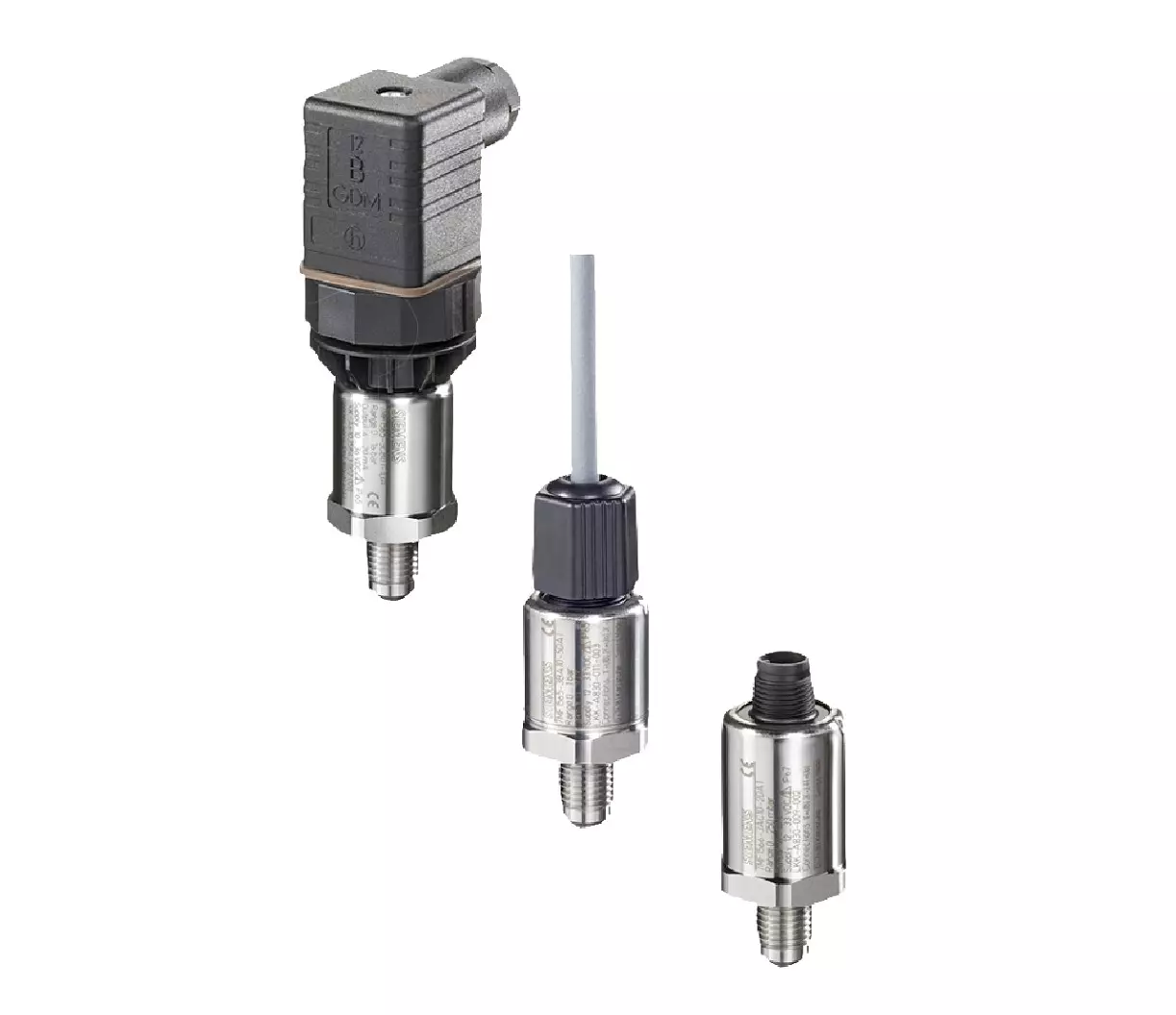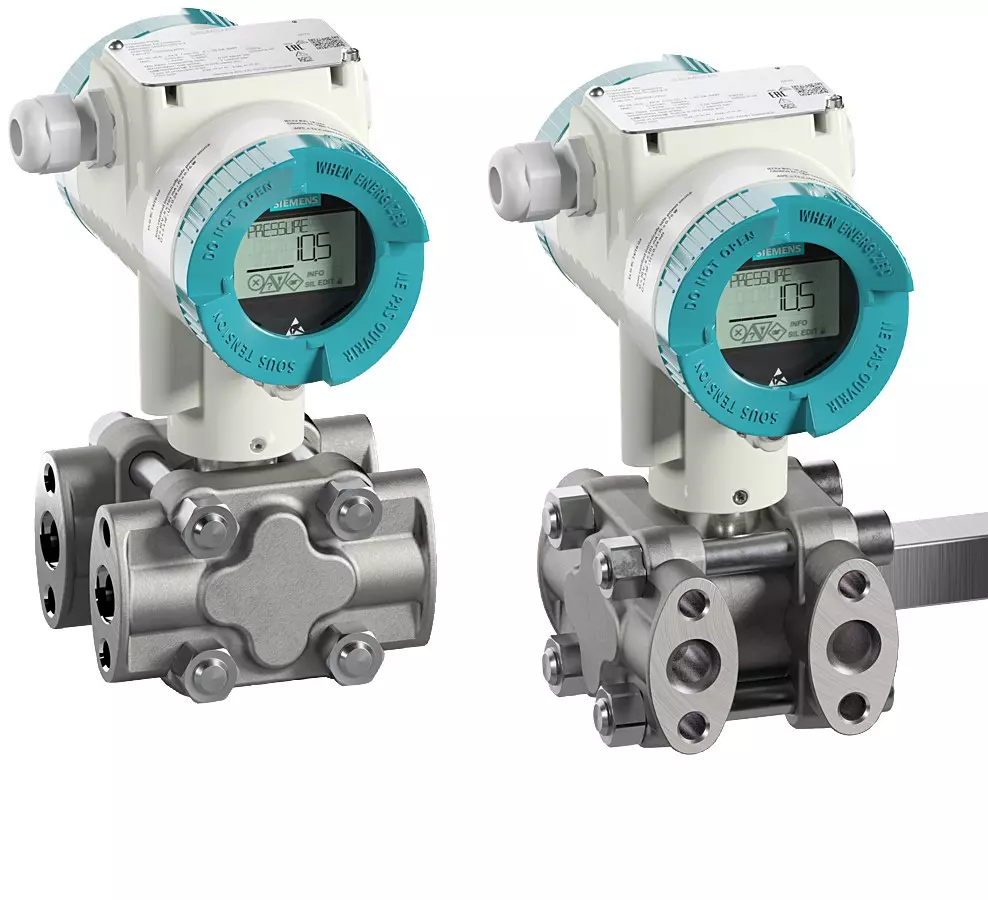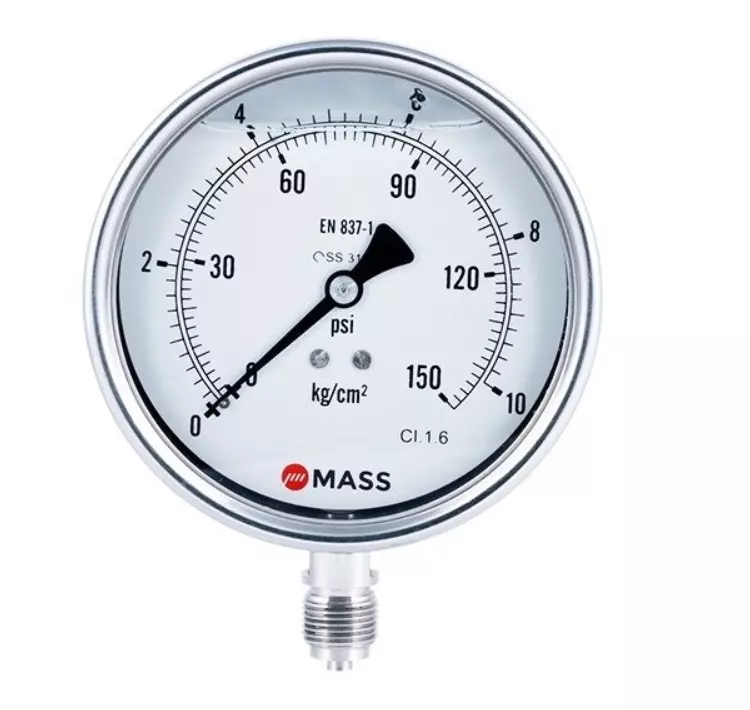Th09 15, 2025 / Bởi Lam Tran / TRONG Tự động hóa
Đo áp suất là trái tim của mọi hệ thống tự động hóa công nghiệp hiện đại. Từ việc đảm bảo an toàn trong nhà máy hóa chất đến kiểm soát chất lượng trong sản xuất thực phẩm, việc lựa chọn và vận hành thiết bị đo áp suất đúng cách quyết định đến hiệu quả và độ tin cậy của toàn bộ quy trình sản xuất. Bài viết này ELEC sẽ cung cấp cho bạn kiến thức toàn diện từ cơ bản đến nâng cao, giúp bạn đưa ra quyết định chính xác cho dự án của mình.

Trong môi trường công nghiệp, đo áp suất chính xác không chỉ đảm bảo hiệu quả vận hành mà còn bảo vệ tính mạng con người và tài sản. Một hệ thống đo áp suất hoạt động tốt có thể:
Tăng 15-25% hiệu suất sản xuất thông qua tối ưu hóa quy trình
Giảm 30-40% chi phí bảo trì nhờ phát hiện sớm các vấn đề
Đảm bảo 99.9% độ tin cậy trong các ứng dụng an toàn quan trọng
Tuân thủ 100% các tiêu chuẩn quốc tế về chất lượng và an toàn
Định nghĩa: Áp suất so với áp suất khí quyển (1 bar = 0 psig)
Ứng dụng: Hệ thống nước, khí nén, bể chứa mở
Ký hiệu: psig, barg
Ví dụ: Áp suất trong boiler thường đo ở 8-12 barg
Định nghĩa: Áp suất so với chân không hoàn toàn
Ứng dụng: Hệ thống chân không, đo độ cao, weather monitoring
Ký hiệu: psia, bara
Ví dụ: Áp suất khí quyển chuẩn = 1.013 bara
Định nghĩa: Hiệu số áp suất giữa hai điểm
Ứng dụng: Đo lưu lượng, mức chất lỏng, độ sạch filter
Ký hiệu: psid, mbar differential
Ví dụ: Chênh lệch áp suất qua orifice plate để đo lưu lượng
Công Nghệ | Độ Chính Xác | Dải Áp Suất | Chi Phí | Ứng Dụng Chính |
Cơ Học (Bourdon) | ±0.5-3% | 0-1000 bar | Thấp | Giám sát cơ bản, HVAC |
Điện Tử (Strain Gauge) | ±0.1-0.5% | 0-700 bar | Trung bình | Process control, F&B |
Tiên Tiến (MEMS) | ±0.05-0.25% | 0-400 bar | Cao | Aerospace, Medical |
SITRANS P của Siemens là dòng sản phẩm được tin dùng nhất trong công nghiệp Việt Nam với những ưu điểm vượt trội:
Đặc Điểm Kỹ Thuật Nổi Bật:
Dải đo: 8.3 mbar đến 700 bar
Độ chính xác: ±0.05% span (model cao cấp)
Nhiệt độ vận hành: -40°C đến +85°C
Tín hiệu đầu ra: 4-20mA/HART, Foundation Fieldbus, PROFIBUS
Bảo vệ: IP65, IP67 (optional)
Model Phổ Biến và Ứng Dụng:
SITRANS P320/P420
Ứng dụng: Process industries, Oil & Gas
Đặc điểm: Remote seal capability, SIL 2/3 certification
Giá tham khảo: 15-25 triệu VNĐ
SITRANS P DS III
Ứng dụng: Food & Beverage, Pharmaceutical
Đặc điểm: Sanitary design, FDA approved materials
Giá tham khảo: 18-30 triệu VNĐ

Ưu Điểm:
Không cần nguồn điện: Hoạt động độc lập
Chi phí thấp: 500,000 - 2,000,000 VNĐ
Độ tin cậy cao: Ít hỏng hóc
Dễ đọc: Hiển thị trực quan
Nhược Điểm:
Độ chính xác thấp: ±1-3% full scale
Không có tín hiệu điện: Không tích hợp được với hệ thống DCS/PLC
Ảnh hưởng rung động: Cần shock absorber trong môi trường rung

Khi Nào Cần Sử Dụng Remote Seal?
Nhiệt độ quá cao/thấp: >150°C hoặc <-40°C
Môi trường ăn mòn: Axit, kiềm mạnh
Chất lỏng kết tinh: Paraffin, chocolate
Yêu cầu vệ sinh: Food grade, pharmaceutical
Các Loại Remote Seal:
Threaded Connection
Ứng dụng: General purpose applications
Kết nối: 1/4" NPT, 1/2" NPT
Dải nhiệt độ: -40°C đến +400°C
Flanged Connection
Ứng dụng: High pressure, high temperature
Standard: ANSI, DIN, JIS flanges
Áp suất: Lên đến 420 bar
Sanitary Connection
Ứng dụng: Food, pharma, biotech
Standard: Tri-clamp, DIN 11851, SMS
Vật liệu: 316L stainless steel
Yêu Cầu Đặc Biệt:
Vệ sinh: FDA, 3A Sanitary Standards
Vật liệu: 316L stainless steel, EPDM gaskets
Thiết kế: Self-draining, crevice-free
Chứng nhận: HACCP, BRC compliance
Ứng Dụng Cụ Thể:
Hệ Thống CIP (Clean-in-Place)
Mục đích: Giám sát áp suất cleaning solution
Yêu cầu: Chịu được NaOH 3%, HNO3 2%
Thiết bị đề xuất: SITRANS P với sanitary connection
Điểm đo: Supply tank, return line, spray balls
Tank Level Monitoring
Nguyên lý: Hydrostatic pressure measurement
Công thức: Level (m) = Pressure (mbar) / (Density × 9.81)
Lưu ý: Bù nhiệt độ cho density variation
Accuracy: ±5mm cho tank cao 10m
Pasteurization Control
Áp suất steam: 2-3 barg cho 121°C
Kiểm soát: Pressure profile theo HTST standard
An toàn: Safety valve setting ở 110% working pressure
Tiêu Chuẩn Nghiêm Ngặt:
Regulatory: FDA 21 CFR Part 11, EU GMP Annex 15
Materials: USP Class VI approved
Validation: IQ/OQ/PQ documentation
Traceability: Full material certificates
Ứng Dụng Quan Trọng:
Clean Room Pressure Control
Differential pressure: +15 Pa minimum giữa các class
Monitoring: Continuous với alarm
Accuracy: ±1 Pa
Response time: <2 seconds
Bioreactor Monitoring
Parameters: Vessel pressure, gas flow control
Range: -50 mbar đến +2 bar typical
Sterilization: Steam-in-place (SIP) capability
Materials: 316L với electropolished surface
WFI Storage Systems
Temperature: 80-85°C circulation
Pressure: Slight positive để prevent contamination
Materials: 316L với <0.5μm Ra surface finish
Validation: Bacterial endotoxin testing
Thách Thức Môi Trường:
Chemicals: Black liquor, white liquor (pH 12-14)
Temperature: Lên đến 170°C trong digester
Abrasion: High suspended solids
Corrosion: Chlorine dioxide, sodium hypochlorite
Giải Pháp Kỹ Thuật:
Digester Monitoring
Pressure range: 0-10 barg typical
Temperature: 160-170°C
Solution: Remote seal với cooling element
Materials: Hastelloy C-276 cho wetted parts
Recovery Boiler
Steam pressure: 4-8 MPa
Safety: SIL 3 certified transmitters
Redundancy: 2oo3 voting system
Maintenance: Online calibration capability
Thông Số Kỹ Thuật Cơ Bản:
[ ] Dải đo (range): Min/max pressure expected
[ ] Độ chính xác cần thiết: Process control vs. safety
[ ] Tín hiệu đầu ra: 4-20mA, HART, digital bus
[ ] Nguồn cấp: 24VDC, loop-powered, battery
[ ] Environmental rating: IP65, IP67, explosion-proof
Điều Kiện Môi Trường:
[ ] Nhiệt độ process: Medium temperature
[ ] Nhiệt độ ambient: Installation location
[ ] Độ ẩm: Tropical climate considerations
[ ] Rung động: Pump/compressor proximity
[ ] EMI/RFI: Electrical interference sources
Yêu Cầu Ứng Dụng:
[ ] Process media: Compatibility với wetted materials
[ ] Viscosity: High viscous media considerations
[ ] Sanitary requirements: Food/pharma applications
[ ] Safety certification: SIL 2/3 requirements
[ ] Response time: Dynamic process control
Ngành | Accuracy | Range | Special Features | Budget Range |
Food & Beverage | ±0.25% | 0-10 bar | Sanitary, CIP/SIP | 15-30M VNĐ |
Pharmaceutical | ±0.1% | 0-6 bar | FDA, validation docs | 25-50M VNĐ |
Oil & Gas | ±0.2% | 0-400 bar | Ex-proof, SIL rated | 20-40M VNĐ |
Water Treatment | ±0.5% | 0-16 bar | Corrosion resistant | 10-25M VNĐ |
HVAC | ±1% | 0-10 bar | Cost effective | 2-8M VNĐ |
Áp Suất Đo Tĩnh (Static Pressure)
P_gauge = ρ × g × h
Trong đó:
- ρ = Density (kg/m³)
- g = 9.81 m/s²
- h = Height (m)
Ví dụ: Tank nước cao 5m
P_gauge = 1000 × 9.81 × 5 = 49,050 Pa = 490.5 mbar
Áp Suất Chênh Lệch Qua Orifice
ΔP = (ρ × V²) / (2 × Cd²)
Trong đó:
- V = Velocity (m/s)
- Cd = Discharge coefficient
- ρ = Fluid density
Vị Trí Lắp Đặt:
Tránh dead zones: Nơi có stagnant fluid
Turbulence: Cách xa pump discharge ít nhất 10D
Temperature effects: Tránh direct sunlight, heat sources
Accessibility: Dễ dàng maintenance và calibration
Vibration: Sử dụng flexible mount hoặc snubber
Kết Nối Process:
Impulse line: Slope 1:20 tối thiểu
Material: 316SS cho corrosive service
Insulation: Heat tracing nếu cần thiết
Isolation valve: Full bore ball valve
Drain/vent: Tại điểm thấp/cao nhất
Pre-startup Checks:
[ ] Mechanical installation secure
[ ] Electrical connections correct (polarity)
[ ] Grounding system proper
[ ] Configuration parameters loaded
[ ] Calibration certificates available
Loop Testing:
[ ] 4-20mA signal verification
[ ] HART communication test
[ ] Alarm setpoints functional
[ ] Historical trending setup
[ ] Documentation complete
Lỗi Thường Gặp và Cách Khắc Phục:
Condensation trong Impulse Line
Nguyên nhân: Thiếu insulation, temperature gradient
Khắc phục: Heat tracing + thermal insulation
Prevention: Proper slope design
Pressure Pulsation
Nguyên nhân: Reciprocating pump, quick-closing valve
Khắc phục: Pulsation dampener, snubber
Prevention: System design optimization
Zero Drift
Nguyên nhân: Temperature variation, mounting stress
Khắc phục: Temperature compensation, flexible mount
Prevention: Proper installation practices
Hàng Tuần:
[ ] Visual inspection cho leak, corrosion
[ ] Check alarm functionality
[ ] Verify display readings vs. control room
[ ] Clean external surfaces
Hàng Tháng:
[ ] Impulse line inspection
[ ] Electrical connection tightness
[ ] Configuration backup
[ ] Trend analysis review
Hàng Quý:
[ ] Zero/span check với portable calibrator
[ ] Loop current verification
[ ] Vibration analysis (nếu applicable)
[ ] Documentation update
Hàng Năm:
[ ] Full calibration với traceability
[ ] Wetted parts inspection
[ ] Software/firmware update
[ ] Performance evaluation
Thiết Bị Cần Thiết:
Pressure calibrator: Fluke 719Pro, Beamex MC6
Reference standard: 0.025% accuracy minimum
Test gauge: Deadweight tester cho high accuracy
Documentation: Calibration certificates, procedures
Quy Trình 5 Điểm Chuẩn:
0% range: Zero point verification
25% range: Low range linearity
50% range: Mid-range accuracy
75% range: High range linearity
100% range: Full scale verification
Acceptance Criteria:
Accuracy: Trong ±0.25% full scale
Repeatability: <0.1% range
Hysteresis: <0.2% range
Zero stability: <0.1% per 6 months
Vấn Đề và Giải Pháp:
Output Signal Unstable
Check: Wiring connection, grounding
Solution: Shield cable, separate power routing
Prevention: Proper EMI protection
Reading Drifts Over Time
Check: Temperature effect, mounting stress
Solution: Temperature compensation, flexible mount
Prevention: Proper installation design
No Output Signal
Check: Power supply, loop continuity
Solution: Replace fuse, repair wiring
Prevention: Surge protection devices
Tính Năng Thông Minh:
Self-diagnostics: Sensor drift detection
Predictive maintenance: Failure prediction algorithms
Auto-calibration: Reference standard built-in
Multi-variable: Pressure + temperature + flow
Wireless capability: 802.11, Bluetooth, LoRaWAN
Lợi Ích Kinh Tế:
Reduced downtime: 30-50% giảm unplanned shutdown
Lower maintenance cost: 25-40% savings
Improved accuracy: Self-correction algorithms
Remote monitoring: Reduced site visits
Data analytics: Process optimization insights
Kết Nối Đám Mây:
Cloud platforms: AWS IoT, Azure IoT Hub, Google Cloud
Data analytics: Machine learning algorithms
Remote access: Smartphone/tablet apps
Historical data: Long-term trend analysis
Alarm management: SMS, email notifications
Security Considerations:
Encryption: End-to-end data protection
Authentication: Multi-factor access control
Network segmentation: Industrial network isolation
Regular updates: Security patch management
Ưu Điểm MEMS:
Size reduction: 80% smaller than conventional
Lower power: Battery operation 5+ years
Higher accuracy: Digital compensation algorithms
Faster response: <1ms typical
Cost effective: Mass production benefits
Ứng Dụng Mới:
Wearable devices: Personal safety monitoring
Mobile equipment: Construction machinery
Medical devices: Blood pressure, respiratory
Automotive: Tire pressure, engine management
Q1: Làm thế nào để chọn đúng range cho pressure transmitter?
A: Range nên được chọn sao cho:
Working pressure = 50-75% của full scale range
Maximum pressure < 80% full scale range
Minimum pressure > 10% full scale range
Ví dụ: Nếu working pressure là 6 bar, chọn range 0-10 bar
Q2: Khi nào cần sử dụng remote seal?
A: Remote seal cần thiết khi:
Process temperature > 150°C hoặc < -40°C
Corrosive media (acid, caustic)
Crystallizing/solidifying media
Sanitary applications (food, pharma)
High viscosity fluids
Q3: Tần suất hiệu chuẩn bao lâu một lần?
A: Tùy thuộc ứng dụng:
Safety applications: 6 tháng
Process control: 12 tháng
General monitoring: 18-24 tháng
Non-critical: 24-36 tháng
Q4: Sự khác biệt giữa 4-20mA và HART?
A:
4-20mA: Analog signal, single variable
HART: Digital + analog, multiple variables, diagnostics
Cost: HART đắt hơn 20-30%
Benefits: Remote configuration, advanced diagnostics
Q5: Làm sao để giảm pressure pulsation?
A:
Snubber: Chỉ giảm high frequency pulsation
Pulsation dampener: Hiệu quả cho low frequency
Piping design: Accumulator tank gần measurement point
Software filtering: Digital filter trong transmitter
Q6: Vật liệu nào phù hợp cho acid service?
A:
Mild acid: 316L stainless steel
Strong acid: Hastelloy C-276, Monel
Hydrofluoric acid: Monel 400
Chlorine service: Titanium
Q7: Cách khắc phục condensation trong impulse line?
A:
Heat tracing: Duy trì temperature > dew point
Insulation: Giảm heat loss
Slope: 1:20 minimum về phía process
Drain valves: Tại low points
Q8: Smart transmitter có đáng đầu tư không?
A: Có, nếu:
Large installation: >50 transmitters
Critical process: High downtime cost
Remote location: Khó tiếp cận maintenance
Regulatory: FDA, SIL requirements
ROI: Thường 12-18 tháng payback
Kết Luận
Việc lựa chọn và vận hành hệ thống đo áp suất hiệu quả đòi hỏi hiểu biết sâu về công nghệ, ứng dụng và yêu cầu cụ thể của từng ngành. Từ việc xác định đúng specifications, lắp đặt theo đúng kỹ thuật, đến bảo trì định kỳ và nâng cấp công nghệ - mỗi bước đều quan trọng cho thành công của dự án.
Xu hướng tương lai hướng đến các giải pháp thông minh hơn với khả năng tự chẩn đoán, kết nối IoT và ứng dụng AI để tối ưu hóa vận hành. Đầu tư vào công nghệ hiện đại không chỉ mang lại lợi ích kinh tế ngắn hạn mà còn đảm bảo tính bền vững và khả năng cạnh tranh dài hạn.
Liên Hệ Tư Vấn Chuyên Nghiệp
Để được hỗ trợ lựa chọn giải pháp đo áp suất phù hợp nhất cho dự án của bạn, hãy liên hệ với đội ngũ kỹ sư giàu kinh nghiệm của chúng tôi. Chúng tôi cam kết cung cấp:
Tư vấn kỹ thuật miễn phí cho dự án của bạn
Báo giá chi tiết với ROI analysis
Hỗ trợ lắp đặt và commissioning
Chương trình bảo trì chuyên nghiệp
Đào tạo vận hành cho team kỹ thuật
Hotline: 0909.000.786
Website: PLCSIEMENS.VN
Bài viết được biên soạn bởi đội ngũ kỹ sư có hơn 15 năm kinh nghiệm trong lĩnh vực tự động hóa công nghiệp. Thông tin được cập nhật theo các tiêu chuẩn quốc tế mới nhất và thực tiễn tại Việt Nam. Link Download hướng dẫn do áp suất công nghiệp
Thẻ: thiết bị đo áp suấtđo áp suất công nghiệppressure transmittercảm biến áp suấtđồng hồ đo áp suất
Th11 20, 2025 qua Lam Tran
Th10 27, 2025 qua Lam Tran
